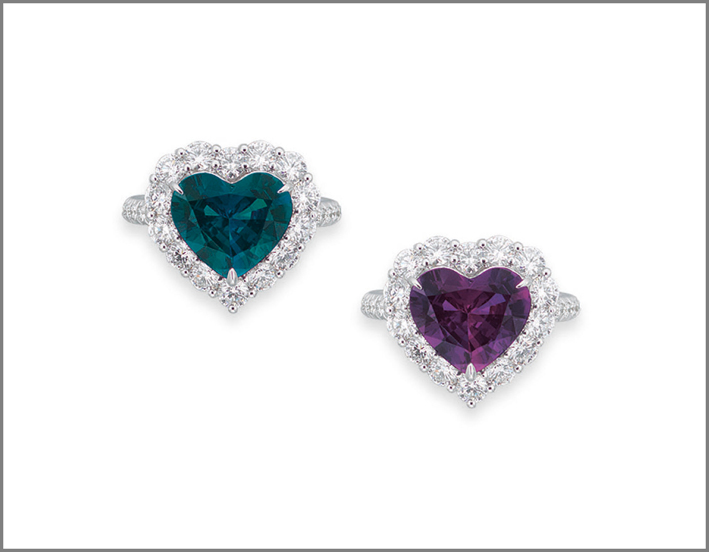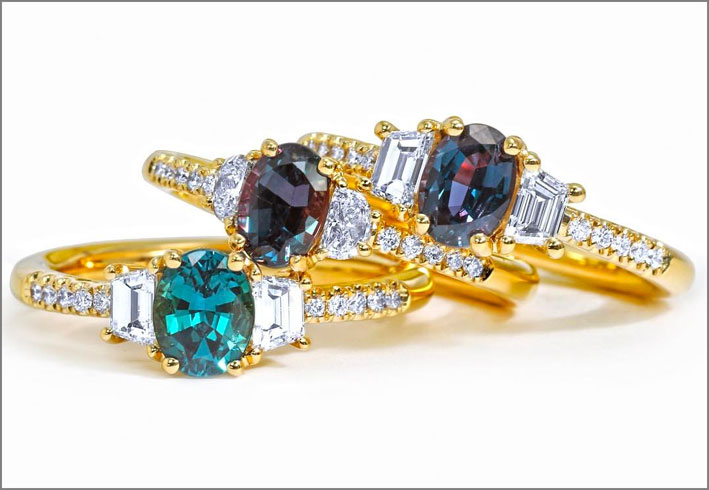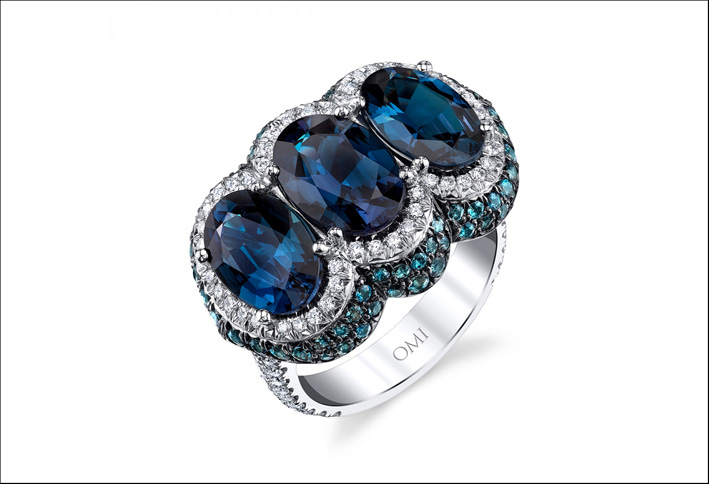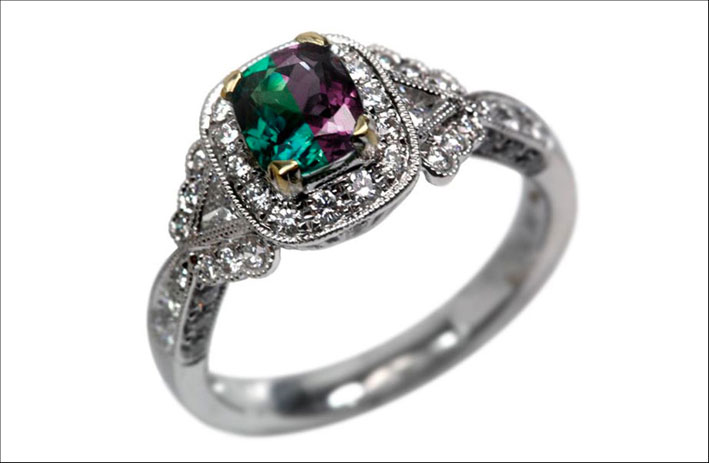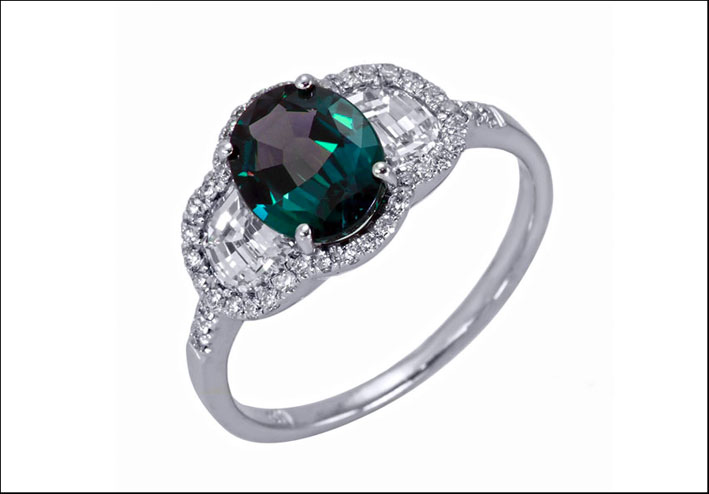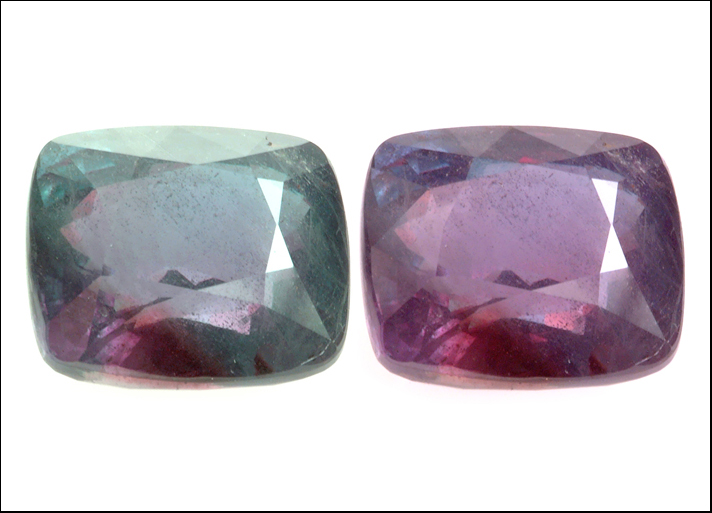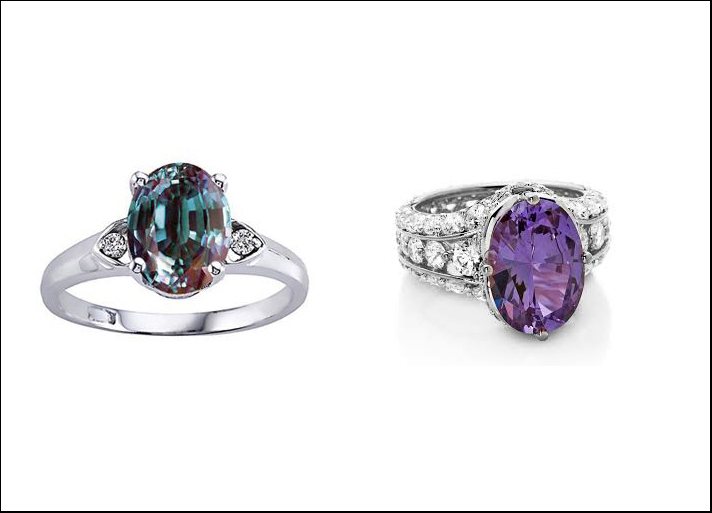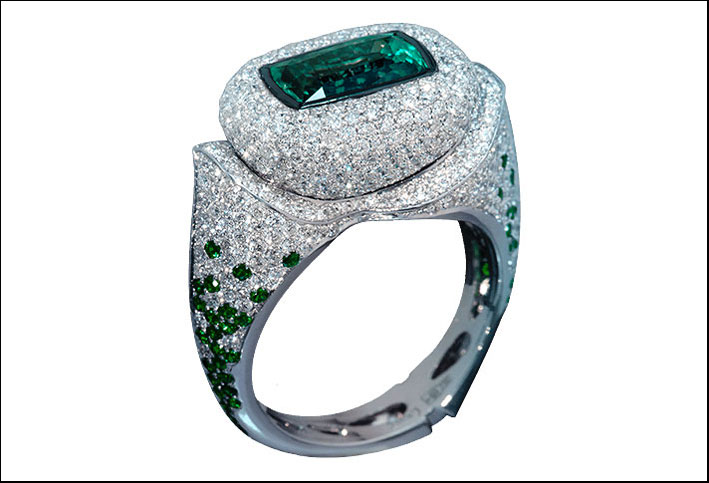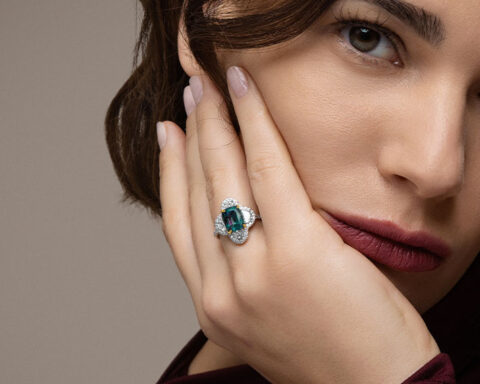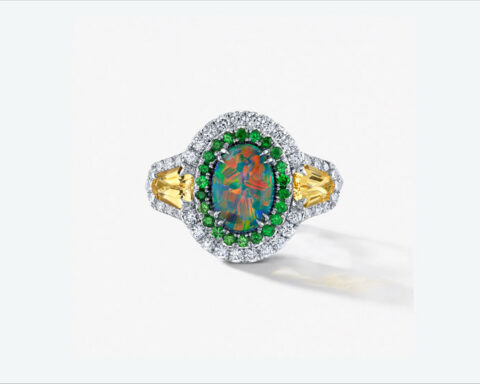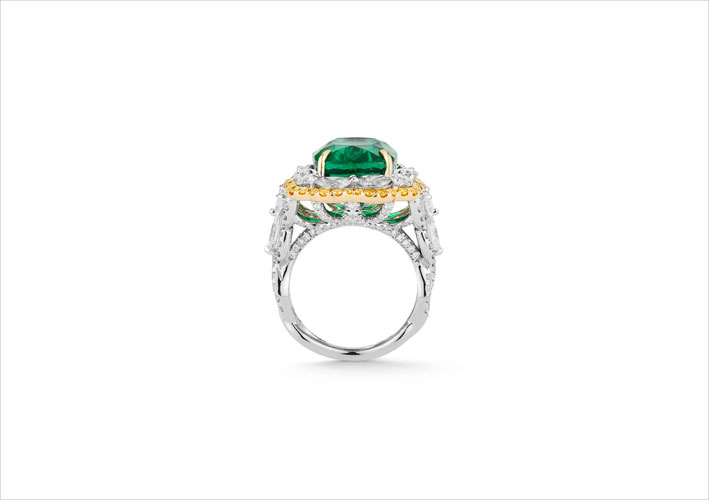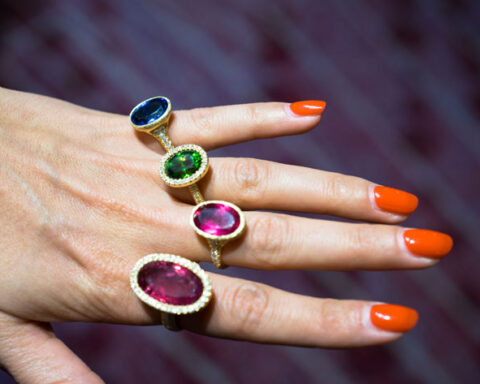Alexandrite, a stone that changes color and is therefore highly sought after. And it is also one of the stones of the month of June. Did you know? ♦ ︎
Belle de jour, Belle de nuit: no, it is not Catherine Deneuve, but a rare gem, alexandrite, also known as chameleon stone because it changes color depending on which it is exposed. Green grass under the sun, it becomes purple (raspberry for the most magnificent examples) near a lamp or a candle, thanks to the inclusions of chromium and iron, elements that are respectively even in rubies and in sapphires. Unfortunately, the alexandrite is not often found and not even in high quality. From the point of view of gemology this stone is a variety of chrysoberyl and the few copies they end up in the hands of collectors of precious stones, rather than being used in jewelry. When alexandrite is used for rings, necklaces or earrings, are usually small gems that once worked barely exceed the carat.

They cost like diamonds. Sure, there are exceptions, which are evaluated as a diamond of the same size. For example, the stones that have cat eye inclusions over 4 carats. The purest and most transparent gems are cut faceted, those with inclusions to the naked eye instead are mounted as cabochons.

History. The alexandrite was discovered in Russia, in the Urals, in the mid-nineteenth century, but today they are also found in Sri Lanka, Zimbabwe, Brazil, Burma, USA, India, Madagascar, Tanzania, Tasmania. The largest faceted alexandrite of 21 century weighing 66 carats and belongs to the Smithsonian Institute in Washington.
Beware of fakes. In circulation there are many imitations of the same gem or of synthetic corundum and spinels with alexandrite’s properties. More transparent than the natural forms, they also have different hues: change from red violet to purple blue.
